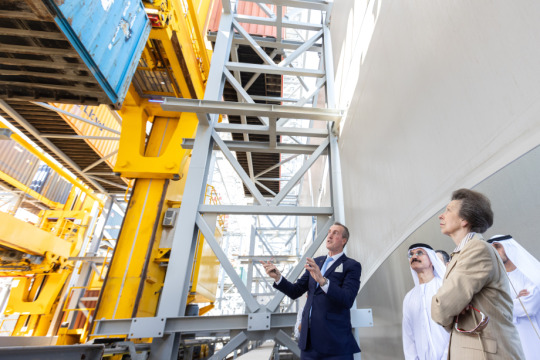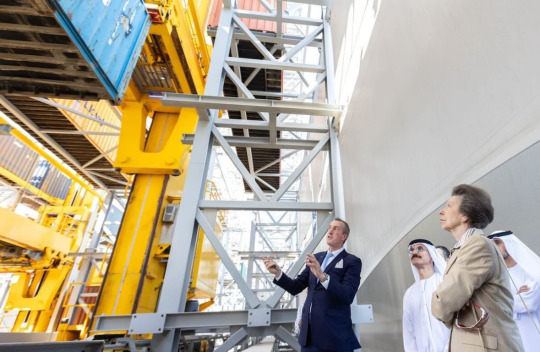#US Global Storage as a Service
Explore tagged Tumblr posts
Note
what did you mean by "... produces ptsd on an industrial scale"? just trying to understand, thank u!
content moderation for platforms like facebook and tiktok employs thousands of people, sometimes in the usa but more commonly in the global south (so they can be paid less) to sit at computers and view hundreds of flagged posts a day, including graphic violence and csem, for awful wages, under ridiculously stringent conditions. this results in many, many of the people who work in this field developing PTSD -- and of course they are not given adequate treatment of support, one article cites facebook giving its moderaties nine minutes of 'wellness time' for employees to recover if they see something traumatic.
here's some articles on the topic that can give you a good overview of what working conditions in this field are like, but warning, there's pretty graphic descriptions of violence, animal abuse, and child sexual abuse in these articles, as well as frank discussion of suicidal ideation:
Nearby, in a shopping mall, I meet a young woman who I'll call Maria. She's on her lunch break from an outsourcing firm, where she works on a team that moderates photos and videos for the cloud storage service of a major US technology company. Maria is a quality-assurance representative, which means her duties include double-checking the work of the dozens of agents on her team to make sure they catch everything. This requires her to view many videos that have been flagged by moderators “I get really affected by bestiality with children,” she says. “I have to stop. I have to stop for a moment and loosen up, maybe go to Starbucks and have a coffee.” She laughs at the absurd juxtaposition of a horrific sex crime and an overpriced latte.
For Carlos, a former TikTok moderator, it was a video of child sexual abuse that gave him nightmares. The video showed a girl of five or six years old, he said [...] It hit him particularly hard, he said, because he’s a father himself. He hit pause, went outside for a cigarette, then returned to the queue of videos a few minutes later.
Randy also left after about a year. Like Chloe, he had been traumatized by a video of a stabbing. The victim had been about his age, and he remembers hearing the man crying for his mother as he died. “Every day I see that,” Randy says, “I have a genuine fear over knives. I like cooking — getting back into the kitchen and being around the knives is really hard for me.”
1K notes
·
View notes
Text
Green energy is in its heyday.
Renewable energy sources now account for 22% of the nation’s electricity, and solar has skyrocketed eight times over in the last decade. This spring in California, wind, water, and solar power energy sources exceeded expectations, accounting for an average of 61.5 percent of the state's electricity demand across 52 days.
But green energy has a lithium problem. Lithium batteries control more than 90% of the global grid battery storage market.
That’s not just cell phones, laptops, electric toothbrushes, and tools. Scooters, e-bikes, hybrids, and electric vehicles all rely on rechargeable lithium batteries to get going.
Fortunately, this past week, Natron Energy launched its first-ever commercial-scale production of sodium-ion batteries in the U.S.
“Sodium-ion batteries offer a unique alternative to lithium-ion, with higher power, faster recharge, longer lifecycle and a completely safe and stable chemistry,” said Colin Wessells — Natron Founder and Co-CEO — at the kick-off event in Michigan.
The new sodium-ion batteries charge and discharge at rates 10 times faster than lithium-ion, with an estimated lifespan of 50,000 cycles.
Wessells said that using sodium as a primary mineral alternative eliminates industry-wide issues of worker negligence, geopolitical disruption, and the “questionable environmental impacts” inextricably linked to lithium mining.
“The electrification of our economy is dependent on the development and production of new, innovative energy storage solutions,” Wessells said.
Why are sodium batteries a better alternative to lithium?
The birth and death cycle of lithium is shadowed in environmental destruction. The process of extracting lithium pollutes the water, air, and soil, and when it’s eventually discarded, the flammable batteries are prone to bursting into flames and burning out in landfills.
There’s also a human cost. Lithium-ion materials like cobalt and nickel are not only harder to source and procure, but their supply chains are also overwhelmingly attributed to hazardous working conditions and child labor law violations.
Sodium, on the other hand, is estimated to be 1,000 times more abundant in the earth’s crust than lithium.
“Unlike lithium, sodium can be produced from an abundant material: salt,” engineer Casey Crownhart wrote in the MIT Technology Review. “Because the raw ingredients are cheap and widely available, there’s potential for sodium-ion batteries to be significantly less expensive than their lithium-ion counterparts if more companies start making more of them.”
What will these batteries be used for?
Right now, Natron has its focus set on AI models and data storage centers, which consume hefty amounts of energy. In 2023, the MIT Technology Review reported that one AI model can emit more than 626,00 pounds of carbon dioxide equivalent.
“We expect our battery solutions will be used to power the explosive growth in data centers used for Artificial Intelligence,” said Wendell Brooks, co-CEO of Natron.
“With the start of commercial-scale production here in Michigan, we are well-positioned to capitalize on the growing demand for efficient, safe, and reliable battery energy storage.”
The fast-charging energy alternative also has limitless potential on a consumer level, and Natron is eying telecommunications and EV fast-charging once it begins servicing AI data storage centers in June.
On a larger scale, sodium-ion batteries could radically change the manufacturing and production sectors — from housing energy to lower electricity costs in warehouses, to charging backup stations and powering electric vehicles, trucks, forklifts, and so on.
“I founded Natron because we saw climate change as the defining problem of our time,” Wessells said. “We believe batteries have a role to play.”
-via GoodGoodGood, May 3, 2024
--
Note: I wanted to make sure this was legit (scientifically and in general), and I'm happy to report that it really is! x, x, x, x
#batteries#lithium#lithium ion batteries#lithium battery#sodium#clean energy#energy storage#electrochemistry#lithium mining#pollution#human rights#displacement#forced labor#child labor#mining#good news#hope
3K notes
·
View notes
Note
Maybe I should wait for the PDF, but I’ve been thinking about password managers lately and might forget to check for that. My problem is that if there’s one thing I want to never ever put on the cloud to potentially get compromised, it’s my password information. But if there’s one thing I don’t want to lose access to, it’s also my password information. This seems to rule out both local options like KeePassXC and remote ones like Bitwarden.
I've started to become somewhat annoyed by the "there is no cloud, there is only someone else's computer" thing (this is a general thing, not specifically directed at you but you reminded me of it).
The risks of putting things on the cloud are that the internet or the provider will go down and you'll lose access to your data OR that the data will be compromised because the information is essentially public because it's on someone else's device.
Losing access because the provider crashes and burns or because there is a global internet outage is a distinct possibility, however with most password managers it is very very easy to download a copy of your data, which you can then store as an encrypted file on your desktop.
With companies like Bitwarden and Proton, which have open source encrypted cloud storage, your risk of compromise from being on someone else's computer is essentially zero. It IS important to make sure that you're finding a provider who is actually encrypting your shit and is not holding onto your password, which is why Bitwarden and Proton are the providers I keep recommending (privacyguides.org has recommendations here; bitwarden, protonpass, and keepassxc are all on the list, all of these are extremely safe options).
And that's where I have the problem with the "other people's computer" thing. I would have zero problems with storing a properly encrypted file in the comments of a facebook page. If a document had good encryption I would post it on livejournal and not worry about people getting into it. If you are working with good encryption, there is zero risk of compromise when keeping your shit on someone else's computer.
So I actually think the solution for either side of this conundrum is the same: If you're worried about losing access to your password manager because a service shuts down or the internet blows up, download a copy of your data to your desktop and store it in an encrypted folder on your computer. If you're worried about losing access to your password manager if your physical hardware is damaged in a disaster, export a copy of your data, save it as an encrypted file, and upload your encrypted file to gmail for all it matters - they will straight up not be able to get into it.
But that's also all kind of beside the point because a major feather in Bitwarden's cap is that you can self-host. It doesn't need to go on someone else's cloud, you can put it on your own server and never worry that someone else is going to tinker with your password manager.
Either way, you are sort of worrying beyond your means because if you're not using a password manager right now you are almost certainly at greater risk of credential stuffing attacks than anything else and need to put out that fire.
Anyway if you're at Harvey Mudd have you tried Dr. Grubbs across from where Rhino used to be? Everything on the menu is great but there is this jalapeño garlic sauce they've got to go with their mains that is so good that I want like two gallons of it.
326 notes
·
View notes
Text
Occasionally I think about the fact that I probably have (most of) the technical skills to build a serviceable Tumblr alternative in the event of The Collapse, and have an investment in the culture and preservation/enabling of fandom creation, and I start wondering again about whether it would be a good idea to make an attempt.
And then I always run up against the elephant in the room which is cost. The cost of maintaining a site like this at scale must be astronomical. Vast numbers of servers for redundancy and global endpoints, processing power to handle millions of simultaneous requests, database storage for an exponentially growing amount of posts and reblog information, and then the image hosting requirements, my god... and the human non-automated moderation that people want...
I already spend a sizable chunk of change just keeping RPThreadTracker running and that thing is TINY.
This is why I get a little frustrated at the kneejerk aversion to any sort of monetary support by the Tumblr userbase; I think a lot of people just don't fathom that if you want a FREE site and community of this size and robustness, money still HAS to be involved somewhere. A LOT of money. Which means our options are:
A powerful corporate interest
Having our data sold to the highest bidder
User participation in donations and optional purchases
Tumblr has a combination of 1 and 3 which allows us to avoid 2, and yet people constantly spit in the face of 3 and then wonder why the whole situation is so fragile.
Anyway, all this to say that I need some extraordinarily rich person who is at home in the Tumblr ecosystem to come out of the woodwork. I just wanna talk.
64 notes
·
View notes
Text
Y’All Be Sinners
Country!Wanda x Male Reader

Sunday had arrived at the Maximoff Farm. For Wanda it was another great day to spend with her city boy in the comfort of her church. For you, it was a great day to be with your country girl and her family in a place you hoped to someday tie the knot in.
You stood in the mirror and readied your church clothes outfit. Wanda, your loving gal, wrapped her arms around you, hugging you from behind.
“Looking good enough to eat, city boy” she giggles
“I’m more of a desert option,” you lift up one of her hands and kiss it tenderly. Your girl was a blushing mess already.
“Glad we’re all going to church today,” Piet mutters as he walks up with his gal Crystal in his arms. “You buncha sinners need it”
“Oh don’t go all holier than thou, Piet” Wanda warns her brother.
“Yeah we heard you and Crystal last night,” you chuckle, “and you weren’t exactly speaking in tongues.”
Crystal blushes before smacking her man. Crystal was a quiet gal but she had her moments of ferocity. Wanda already loved her like a sister, she was just waiting on Piet to propose.
Church was a small intimate affair in the small rural town. Father Wong was always there at the door to greet the ten to twenty people who came every week.
“Wanda!” He smiled at you and your gal, “miss Kate fell ill this morning, can we get you to lead the hymn today?”
“Aww shucks preacher,” she giggles “you beg your wine storage I can.”
Father Wong lead the opening prayer at the very front of the small church before turning it over to Wanda. She took a deep breath and began singing.
Amazing grace
How sweet the sound
That saved a wretch like me
I once was lost
but now I’m found.
Was blind but now I see
She was a natural up there. The way she carried herself. The way she held the notes. You knew it was only a matter of time before her and her band went global.
It was like even the heavens were proud of her. A beam of light cascaded thru the stain glass window and casted upon her and the stage.
As the song ended, the entire congregation was hooting and hollering at how good your gal was. She gave a little bow and blew you a kiss.
Piet playfully punched your shoulder, “ya sinner”
You sit there in the tiny church garden after the service. Your mind races with different thoughts and emotions and yet you felt peaceful there. It was a safe space.
Your fingers played with a small piece of gold that Pietro gave ya earlier in the week.
Your country gal walked out of the church, the sun hitting her white dress just right. She looked like an angel in your eyes.
“What are ya up to, city boy?”
“Just thinking” you shrug
“About?”
“This little church would be the perfect venue for a couple sinners like us”
“Oh you,” she playfully punches you in the shoulder, “wait a minute. Perfect venue?”
You reveal the little piece of gold you had been holding: a diamond ring. It was Wanda’s grandmother’s ring.
“Make an honest woman outta my sis, alright?” Piet said after handing it to you.
“Only if Crystal makes an honest man out of you, Piet” you told him back. Piet gave you a wink in response.
You finally found the right time and place to propose to your country girl. Her favorite spot outside her favorite church.
“T-that’s my gramma’s ring” she said tears welling in her eyes.
“My country girl, you turned my whole world upside down.” You get on one knee, “I wanna spend my life with you.”
She was already a weeping mess at this point and yet she never looked more beautiful, “I-I wanna spend ma life with you too”
“You are my songbird, my scarlet witch, my everything. Will you marry—“
You couldn’t even finish because she tackled you to the garden floor and began kissing you something fierce.
You were lost in the moment together. She was your whole world, your country gal. And all you wanted to do was be by her side for the rest of her life. She giggles, kissing you and nipping at your bottom lip, her reddish brown hair drapes down in your eyes, obscuring your vision in the best possible way.
“Wanda?” Father Wong interrupted. “T-this is kind of inappropriate for church-“
Wanda flashes him the ring now nestled on her finger, “I’m engaged!!!” She giggles.
“Okay then,” Wong shrugs, “don’t let me bother you” and with that he walks back to the small church.
You and Wanda still look back on that day with a little laugh. You ended up marrying each other in that little church. And Wong was the one to officiate the wedding too.
Not bad for a bunch of sinners.
Tags @lifespectator @olsenmyolsen @supercorpdanbeau @scarletquake-n7 @tokufighter @idkwhatever580
youtube
#marvel#marvel fluff#marvel imagine#mcu#mcu imagine#mcu fandom#wanda maximoff#wanda maximoff x reader#wanda maximoff fluff#wanda maximoff imagine#country girlfriend#country girl#country Wanda#elizabeth olsen
129 notes
·
View notes
Text
The Best News of Last Week - August 21, 2023
🌊 - Discover the Ocean's Hidden Gem Deep down in the Pacific
1. Massachusetts passed a millionaire's tax. Now, the revenue is paying for free public school lunches.

Every kid in Massachusetts will get a free lunch, paid for by proceeds from a new state tax on millionaires.
A new 4% tax on the state's wealthiest residents will account for $1 billion of the state's $56 billion fiscal budget for 2024, according to state documents. A portion of those funds will be used to provide all public-school students with free weekday meals, according to State House News Service.
2. Plant-based filter removes up to 99.9% of microplastics from water

Researchers may have found an effective, green way to remove microplastics from our water using readily available plant materials. Their device was found to capture up to 99.9% of a wide variety of microplastics known to pose a health risk to humans.
3. Scientists Find A Whole New Ecosystem Hiding Beneath Earth's Seafloor
youtube
Most recently, aquanauts on board a vessel from the Schmidt Ocean Institute used an underwater robot to turn over slabs of volcanic crust in the deep, dark Pacific. Underneath the seafloor of this well-studied site, the international team of researchers found veins of subsurface fluids swimming with life that has never been seen before.
It's a whole new world we didn't know existed.
4. How solar has exploded in the US in just a year

Solar and storage companies have announced over $100 billion in private sector investments in the US since the passage of the Inflation Reduction Act (IRA) a year ago, according to a new analysis released today by the Solar Energy Industries Association (SEIA).
Since President Joe Biden signed the IRA in August 2022, 51 solar factories have been announced or expanded in the US.
5. Researchers have identified a new pack of endangered gray wolves in California

A new pack of gray wolves has shown up in California’s Sierra Nevada, several hundred miles away from any other known population of the endangered species, wildlife officials announced Friday.
It’s a discovery to make researchers howl with delight, given that the native species was hunted to extinction in California in the 1920s. Only in the past decade or so have a few gray wolves wandered back into the state from out-of-state packs.
6. Record-Breaking Cleanup: 25,000 Pounds of Trash Removed from Pacific Garbage Patch

Ocean cleanup crews have fished out the most trash ever taken from one of the largest garbage patches in the world.
The Ocean Cleanup, a nonprofit environmental engineering organization, saw its largest extraction earlier this month by removing about 25,000 pounds of trash from the Great Pacific Garbage Patch, Alex Tobin, head of public relations and media for the organization
7. The Inflation Reduction Act Took U.S. Climate Action Global

The U.S. Inflation Reduction Act (IRA) aimed to promote clean energy investments in the U.S. and globally. In its first year, the IRA successfully spurred other nations to develop competitive climate plans.
Clean energy projects in 44 U.S. states driven by the IRA have generated over 170,600 jobs and $278 billion in investments, aligning with Paris Agreement goals.
---
That's it for this week :)
This newsletter will always be free. If you liked this post you can support me with a small kofi donation here:
Buy me a coffee ❤️
Also don’t forget to reblog this post with your friends.
1K notes
·
View notes
Text
OC Loop Introduction: Part 1

^This is our house! It is based off of the Highwic in Auckland, New Zealand
I’ll be introducing the grounds of the loop in this post, so a lot of photos and some historical information! Next part will be the peculiar who live there
(Please keep in mind that this is one of my DR’s, it is very personal and the peculiars who live there are real people from my CR, so I will be using fake names for them for privacy purposes. Also this is very information based, all of this is basically my script lol)
(‼️All photos are from Pinterest or from the web, I do not own any of these photos and some are not historically accurate as their purpose is for inspiration‼️)
anyways onto the intro!!
🌲✨🕰️🌲✨🕰️🌲✨🕰️🌲✨🕰️🌲✨🕰️🌲
Loop date: April 10, 1968
Location: Auckland, New Zealand
Hidden in a forest near Lake Wakatipu
The Highwic mansion was built by a wealthy European settler family in the late 1800s, abandoned after a tragedy, and later repurposed as the Ymbrynes’ home
the mansion is surrounded by thick forests
Grounds:
Surrounded with lush gardens, a thickly settled forests, and geothermal hot springs
Underground caverns and tunnel systems beneath the mansion for hiding from Hollowgast
Rooms:
23 bedrooms total, 3 spare bedrooms for passing peculiar or new additions to the group
25 bathrooms, one to each bedroom, one in the kitchen and one in the basement
There are 3 main common rooms
There is one large kitchen
There is an inside greenhouse
Basement:
secret exit that opens into the forest for quick escapes.
hidden storage room for supplies and weaponry
Training services such as 1960’s based exercise equipment
Lookout Tower
The lookout tower, accessible via a spiral staircase, offers a panoramic view of the surrounding forest and Lake Wakatipu. It doubles as a quiet retreat or a signal station for emergencies
Large library
Large attic
A literal ballroom (yes I’m extra)
Here are some photos of the inside of the mansion as inspiration:








Here are more bedrooms and parts of the mansion:









It’s very extravagant, the way our head Ymbryne enjoys it
Our loop was created by two ymbrynes, Miss Raven and Miss Silvereye, as an escape for runaway peculiars
They chose this location due to the thick forests being able to hide them and let them live as themselves
history time ‼️‼️‼️
Life in 1960s New Zealand:
In the 1960s, New Zealand was a nation at a crossroads, straddling its colonial past and an emerging modern identity. It remained a peaceful, agrarian society with strong ties to Britain, but the decade saw the seeds of social, cultural, and political change begin to sprout. Life revolved around close-knit communities, outdoor activities, and a slower pace of living, with the country's lush landscapes offering both tranquility and isolation.
Cultural Landscape The 1960s were marked by the continuation of British customs, but this was also a time when New Zealand started forging its unique identity. Rugby reigned supreme as the national pastime, and the All Blacks were cultural heroes. Cinema and radio brought global trends to small towns, while the country embraced rock 'n' roll and the counterculture movement spreading from the United States and Britain.
However, New Zealand was not immune to the social upheavals of the era. The Maori population, historically marginalized, began to push for greater recognition and rights, leading to early discussions about the Treaty of Waitangi and land reform. Environmentalism was also on the rise, with growing concern for the preservation of the nation’s unparalleled natural beauty.
Technological Life Daily life was simpler, with rotary phones, black-and-white televisions, and radios being staples in most households. Cars were becoming more common, but in rural areas, horseback riding or walking was still a way of life. Electricity was widespread, but indoor plumbing was still a luxury in some isolated areas.
Peculiar History in New Zealand Hidden beneath the idyllic surface, peculiar life in 1960s New Zealand was thriving in secrecy. The peculiar world, wary of the rising tensions of the Cold War and environmental degradation, found New Zealand’s isolation to be a refuge. Ymbrynes had long identified the country as a safe haven, establishing loops in remote forests, islands, and mountainous regions like the Southern Alps.
The peculiar history of New Zealand was intrinsically tied to its Maori heritage. Some Maori legends spoke of peculiar abilities—heroes who could command the wind, transform into birds, or commune with the spirits of their ancestors. These stories often intertwined with tales of the taniwha (mythical water guardians) and other supernatural creatures, giving peculiar children a place in the folklore of the land.
The 1968 Peculiar Community
The peculiar community faced unique challenges during this time. The Cold War paranoia extended to normals in New Zealand, and any unusual sightings of peculiar abilities risked being mistaken for Soviet espionage or experimental technology. There were wights posing as soldiers, picking through children to find peculiars, making it difficult to trust a lot of people outside of the loop.
🌲✨🕰️🌲✨🕰️🌲✨🕰️🌲✨🕰️🌲✨🕰️🌲
Here are some geographically based photos:
(I had to put all the forest-based photos into one photo as tumblr was being mean and I couldn’t upload them individually)


🌲✨🕰️🌲✨🕰️🌲✨🕰️🌲✨🕰️🌲✨🕰️🌲
anyways! That’s all for today :D
I’ll be posting about the peculiars who live here probably tomorrow or Tuesday
See ya!
#reality shifting#anti shifters dni#shiftingrealities#scripting#shifting diary#manifesation#miss peregrines home for peculiar children#mphfpc#mphfpc dr#mphfpc book#reality shift#4d reality#mphfpc oc#oc loop
28 notes
·
View notes
Text
Excerpt from this story from RMI:
1. Batteries Become Everybody’s Best Friend
Battery prices continue to drop and their capacity continues to rise. The cost of electric vehicle (EV) batteries are now about 60 percent what they were just five years ago. And around the world, batteries have become key components in solar-plus-storage microgrids, giving people access to reliable power and saving the day for communities this past hurricane season.
2. Americans Get Cheaper (and Cleaner) Energy
State public utility commissions and rural electric co-operatives around the country are taking steps to deliver better service for their customers that also lowers their rates. At the same time, real momentum is building to prevent vertically integrated utilities from preferencing their coal assets when there are cleaner and cheaper alternatives available.
3. A Sustainable Shipping Future Gets Closer
More than 50 leaders across the marine shipping value chain — from e-fuel producers to vessel and cargo owners, to ports and equipment manufacturers — signed a Call to Action at the UN climate change conference (COP29) to accelerate the adoption of zero-emission fuels. The joint statement calls for faster and bolder action to increase the use of zero and near-zero emissions fuel, investment in zero-emissions vessels, and global development of green hydrogen infrastructure, leaving no country behind.
4. Corporations Fly Cleaner
In April, 20 corporations, including Netflix, JPMorgan Chase, Autodesk, and more, committed to purchase about 50 million gallons of sustainable aviation fuel (SAF), avoiding 500,000 tons of CO2 emissions — equivalent to the emissions of 3,000 fully loaded passenger flights from New York City to London. SAF is made with renewable or waste feedstocks and can be used in today’s aircraft without investments to upgrade existing fleets and infrastructure.
5. More and More Places Go From Coal to Clean
Around the world, coal-fired power plants are closing down as communities switch to clean energy. From Chile to the Philippines to Minnesota coal-to-clean projects are creating new jobs, improving local economic development, and generating clean electricity. In September, Britain became the first G7 nation to stop generating electricity from coal — it’s turning its last coal-fired power plant into a low-carbon energy hub. And in Indonesia, the president vowed to retire all coal plants within 15 years and install 75 gigawatts of renewable energy.
6. Methane Becomes More Visible, and Easier to Mitigate
Methane — a super-potent greenhouse gas — got much easier to track thanks to the launch of new methane tracking satellites over the past year. In March, the Environmental Defense Fund launched MethaneSAT, the first for a non-governmental organization, and the Carbon Mapper Coalition soon followed with the launch of Tanager-1. By scanning the planet many times each day and identifying major methane leaks from orbit, these new satellites will put pressure on big emitters to clean up.
7. EVs Speed By Historic Milestones
This past year was the first time any country had more fully electric cars than gas-powered cars on the roads. It’s no surprise that this happened in Norway where electric cars now make up more than 90 percent of new vehicle sales. And in October, the United States hit a milestone, with over 200,000 electric vehicle charging ports installed nationwide.
8. Consumers Continue to Shift to Energy-Efficient Heat Pumps for Heating and Cooling
Heat pumps have outsold gas furnaces consistently since 2021. And while shipments of heating and cooling equipment fell worldwide in 2023, likely due to broad economic headwinds, heat pumps held on to their market share through. And over the past 12 months, heat pumps outsold conventional furnaces by 27 percent. Shipments are expected to continue increasing as states roll out home efficiency and appliance rebate programs already funded by the Inflation Reduction Act – worth up to $10,000 per household in new incentives for heat pump installations. Link: Tracking the Heat Pump & Water Heater Market in the United States – RMI
9. China Reaches Its Renewable Energy Goal, Six Years Early
China added so much renewable energy capacity this year, that by July it had surpassed its goal of having 1,200 gigawatts (GW) of clean energy installed by 2030. Through September 2024, China installed some 161 GW of new solar capacity and 39 GW of new wind power, according to China’s National Energy Administration (NEA). China is deploying more solar, wind, and EVs than any other country, including the United States, which is — by comparison — projected to deploy a record 50 GW of solar modules by the end of 2024.
10. De-carbonizing Heavy Industry
For steel, cement, chemicals and other heavy industries, low-carbon technologies and climate-friendly solutions are not only increasingly available but growing more affordable. To speed this process, Third Derivative, RMI’s climate tech accelerator, launched the Industrial Innovation Cohorts to accelerate the decarbonization of steel, cement, and chemicals. Also on the rise: clean hydrogen hubs — powered by renewable energy — designed to supply green hydrogen to chemical, steel, and other heavy industries to help them shift to low-carbon production processes.
27 notes
·
View notes
Text
Bad Eggs
Despite the efforts taken to test and confirm that Pokémon can remain stable when converted into data when placed in the PC, sometimes a Pokémon’s data can get accidentally corrupted while inside due to an internal error. How the Pokémon physically responds to this is to essentially revert to their most base form – an egg. It is an extreme reaction to a Pokémon encountering something going very very wrong, so they revert to the form that they feel safest in as a sort of ‘natural error handler’ as a result of the Pokémon’s biology being converted into computer data.
However, the egg they turn into does not function like Pokémon eggs typically do. Unlike other eggs that indicate the species it will hatch into in some way, these eggs – Bad Eggs, as they are called – are pale yellow with green spots, the colour desaturated and greyish in appearance and no matter what, these eggs will not hatch (though rumours do circulate about what happens if they do) and if left in the PC can sometimes spread this condition to the data of neighbouring Pokémon like a virus.
This phenomenon doesn’t happen very often and is scarcely documented, often chocked up to just an urban myth or a baseless rumour by Trainers and children. It has even been the subject of internet horror stories – known colloquially as creepypastas – in early internet culture, contributing to this almost mythological status surrounding Bad Eggs and elevating it as something of an urban legend.
However, not very well known by people is that Bad Eggs are a natural phenomenon in nature. Sometimes when a Pokémon lays an egg, they will lay an egg that is empty or rotten and unable to be hatched. It’s unknown why this happens since the actual process of reproduction is a private matter between Pokémon almost never directly observed by humans, and thus research is scarce to practically nonexistent. But when it does happen, the Pokémon will often just bury them since they have no scent indicating anything alive inside.
Bill, being the man responsible for inventing and developing the Pokémon Storage System, immediately began to get to work in order to remedy this once he heard about it and saw the evidence for himself when he caught a Cleffa as a companion for his Clefairy and it turned into a Bad Egg after he put it into the PC System, asking local Breeders if they’ve encountered a similar phenomenon before making this his priority.
He accomplished this by experimenting on himself and his Clefairy (who volunteered for the experiments). It was both a way of engineering teleportation technology and to research how his own biological data would fare when being tampered with and accidentally fusing himself with his Clefairy in the process. He, however, learned a great deal from these experiments and how to manipulate the biological data of Pokémon and eventually engineered a method of converting Bad Eggs back into the original Pokémon they’re supposed to be and restoring them. Bill has since offered a public service for any Trainers whose Pokémon have been turned into Bad Eggs while in the PC and continues to operate it to this day.
The Eevee that Rachel receives from Bill in Goldenrod City while she travels through Johto – affectionately named Potential – was a Bad Egg whose condition he was able to reverse with the help with his sister and her knowledge on machinery. It was his primary test subject in figuring out how to reverse the process. It eventually evolves into Umbreon. He received it from a confused Breeder to use as a test subject in order to discover how to reverse the process and begin making his service public globally. The Eevee was his first test subject as he was a bit hesitant to test on his Cleffa until he successfully reverted Eevee back to its true form.
Since accomplishing this, Bill has since sought out the help and expertise of Lanette and Professor Elm in order to engineer a completely foolproof method for reversing the condition. Eventually, with their combined efforts, they succeed and Bill sets up a service for Trainers to be able to send him their Bad Eggs in order for him to revert them and then return them to their Trainers.
It’s uncommon and rare to occur naturally in Pokémon, but there is a rare to almost impossible chance for it to even happen to humans. No such case has ever been documented as of yet, but the chance of this happening is possible if extremely unlikely. It doesn’t stop the anxiety of new expecting mothers, however.
Though the chance isn’t significant, overbreeding and placing the stock in the PC can lead to an increased chance of the offspring becoming Bad Eggs due to the data bloat.
Taglist:
@earth-shaker / @little-miss-selfships / @xelyn-craft / @sarahs-malewives / @brahms-and-lances-wife
-
@ashes-of-a-yume / @cherry-bomb-ships / @kiawren / @kingofdorkville / @bugsband
Let me know if you'd like to be added or removed from my taglist :3
12 notes
·
View notes
Text
The global backlash against the second Donald Trump administration keeps on growing. Canadians have boycotted US-made products, anti–Elon Musk posters have appeared across London amid widespread Tesla protests, and European officials have drastically increased military spending as US support for Ukraine falters. Dominant US tech services may be the next focus.
There are early signs that some European companies and governments are souring on their use of American cloud services provided by the three so-called hyperscalers. Between them, Google Cloud, Microsoft Azure, and Amazon Web Services (AWS) host vast swathes of the internet and keep thousands of businesses running. However, some organizations appear to be reconsidering their use of these companies’ cloud services—including servers, storage, and databases—citing uncertainties around privacy and data access fears under the Trump administration.
“There’s a huge appetite in Europe to de-risk or decouple the over-dependence on US tech companies, because there is a concern that they could be weaponized against European interests,” says Marietje Schaake, a nonresident fellow at Stanford’s Cyber Policy Center and a former, decade-long member of the European Parliament.
The moves may already be underway. On March 18, politicians in the Netherlands House of Representatives passed eight motions asking the government to reduce reliance on US tech companies and move to European alternatives. Days before, more than 100 organizations signed an open letter to European officials calling for the continent to become “more technologically independent” and saying the status quo creates “security and reliability risks.”
Two European-based cloud service companies, Exoscale and Elastx, tell WIRED they have seen an uptick in potential customers looking to abandon US cloud providers over the last two weeks—with some already starting to make the jump. Multiple technology advisers say they are having widespread discussions about what it would take to uproot services, data, and systems.
“We have more demand from across Europe,” says Mathias Nöbauer, the CEO of Swiss-based hosting provider Exoscale, adding there has been an increase in new customers seeking to move away from cloud giants. “Some customers were very explicit,” Nöbauer says. “Especially customers from Denmark being very explicit that they want to move away from US hyperscalers because of the US administration and what they said about Greenland.”
“It's a big worry about the uncertainty around everything. And from the Europeans’ perspective—that the US is maybe not on the same team as us any longer,” says Joakim Öhman, the CEO of Swedish cloud provider Elastx. “Those are the drivers that bring people or organizations to look at alternatives.”
Concerns have been raised about the current data-sharing agreement between the EU and US, which is designed to allow information to move between the two continents while protecting people’s rights. Multiple previous versions of the agreement have been struck down by European courts. At the end of January, Trump fired three Democrats from the Privacy and Civil Liberties Oversight Board (PCLOB), which helps manage the current agreement. The move could undermine or increase uncertainty around the agreement. In addition, Öhman says, he has heard concerns from firms about the CLOUD Act, which can allow US law enforcement to subpoena user data from tech companies, potentially including data that is stored in systems outside of the US.
Dave Cottlehuber, the founder of SkunkWerks, a small tech infrastructure firm in Austria, says he has been moving the company’s few servers and databases away from US providers to European services since the start of the year. “First and foremost, it’s about values,” Cottlehuber says. “For me, privacy is a right not a privilege.” Cottlehuber says the decision to move is easier for a small business such as his, but he argues it removes some taxes that are paid to the Trump administration. “The best thing I can do is to remove that small contribution of mine, and also at the same time, make sure that my customers’ privacy is respected and preserved,” Cottlehuber says.
Steffen Schmidt, the CEO of Medicusdata, a company that provides text-to-speech services to doctors and hospitals in Europe, says that having data in Europe has always “been a must,” but his customers have been asking for more in recent weeks. “Since the beginning of 2025, in addition to data residency guarantees, customers have actively asked us to use cloud providers that are natively European companies,” Schmidt says, adding that some of his services have been moved to Nöbauer’s Exoscale.
Harry Staight, a spokesperson for AWS, says it is “not accurate” that customers are moving from AWS to EU alternatives. “Our customers have control over where they store their data and how it is encrypted, and we make the AWS Cloud sovereign-by-design,” Straight says. “AWS services support encryption with customer managed keys that are inaccessible to AWS, which means customers have complete control of who accesses their data.” Staight says the membership of the PCLOB “does not impact” the agreements around EU-US data sharing and that the CLOUD Act has “additional safeguards for cloud content.” Google and Microsoft declined to comment.
The potential shift away from US tech firms is not just linked to cloud providers. Since January 15, visitors to the European Alternatives website increased more than 1,200 percent. The site lists everything from music streaming services to DDoS protection tools, says Marko Saric, a cofounder of European cloud analytics service Plausible. “We can certainly feel that something is going on,” Saric says, claiming that during the first 18 days of March the company has “beaten” the net recurring revenue growth it saw in January and February. “This is organic growth which cannot be explained by any seasonality or our activities,” he says.
While there are signs of movement, the impact is likely to be small—at least for now. Around the world, governments and businesses use multiple cloud services—such as authentication measures, hosting, data storage, and increasingly data centers providing AI processing—from the big three cloud and tech service providers. Cottlehuber says that, for large businesses, it may take many months, if not longer, to consider what needs to be moved, the risks involved, plus actually changing systems. “What happens if you have a hundred petabytes of storage, it's going to take years to move over the internet,” he says.
For years, European companies have struggled to compete with the likes of Google, Microsoft, and Amazon’s cloud services and technical infrastructure, which make billions every year. It may also be difficult to find similar services on the scale of those provided by alternative European cloud firms.
“If you are deep into the hyperscaler cloud ecosystem, you’ll struggle to find equivalent services elsewhere,” says Bert Hubert, an entrepreneur and former government regulator, who says he has heard of multiple new cloud migrations to US firms being put on hold or reconsidered. Hubert has argued that it is no longer “safe” for European governments to be moved to US clouds and that European alternatives can’t properly compete. “We sell a lot of fine wood here in Europe. But not that much furniture,” he says. However, that too could change.
Schaake, the former member of the European Parliament, says a combination of new investments, a different approach to buying public services, and a Europe-first approach or investing in a European technology stack could help to stimulate any wider moves on the continent. “The dramatic shift of the Trump administration is very tangible,” Schaake says. “The idea that anything could happen and that Europe should fend for itself is clear. Now we need to see the same kind of pace and leadership that we see with defense to actually turn this into meaningful action.”
7 notes
·
View notes
Text
"India’s announcement that it aims to reach net zero emissions by 2070 and to meet fifty percent of its electricity requirements from renewable energy sources by 2030 is a hugely significant moment for the global fight against climate change. India is pioneering a new model of economic development that could avoid the carbon-intensive approaches that many countries have pursued in the past – and provide a blueprint for other developing economies.
The scale of transformation in India is stunning. Its economic growth has been among the highest in the world over the past two decades, lifting of millions of people out of poverty. Every year, India adds a city the size of London to its urban population, involving vast construction of new buildings, factories and transportation networks. Coal and oil have so far served as bedrocks of India’s industrial growth and modernisation, giving a rising number of Indian people access to modern energy services. This includes adding new electricity connections for 50 million citizens each year over the past decade.
The rapid growth in fossil energy consumption has also meant India’s annual CO2 emissions have risen to become the third highest in the world. However, India’s CO2 emissions per person put it near the bottom of the world’s emitters, and they are lower still if you consider historical emissions per person. The same is true of energy consumption: the average household in India consumes a tenth as much electricity as the average household in the United States.
India’s sheer size and its huge scope for growth means that its energy demand is set to grow by more than that of any other country in the coming decades. In a pathway to net zero emissions by 2070, we estimate that most of the growth in energy demand this decade would already have to be met with low-carbon energy sources. It therefore makes sense that Prime Minister Narendra Modi has announced more ambitious targets for 2030, including installing 500 gigawatts of renewable energy capacity, reducing the emissions intensity of its economy by 45%, and reducing a billion tonnes of CO2.
These targets are formidable, but the good news is that the clean energy transition in India is already well underway. It has overachieved its commitment made at COP 21- Paris Summit [a.k.a. 2015, at the same conference that produced the Paris Agreement] by already meeting 40% of its power capacity from non-fossil fuels- almost nine years ahead of its commitment, and the share of solar and wind in India’s energy mix have grown phenomenally. Owing to technological developments, steady policy support, and a vibrant private sector, solar power plants are cheaper to build than coal ones. Renewable electricity is growing at a faster rate in India than any other major economy, with new capacity additions on track to double by 2026...
Subsidies for petrol and diesel were removed in the early 2010s, and subsidies for electric vehicles were introduced in 2019. India’s robust energy efficiency programme has been successful in reducing energy use and emissions from buildings, transport and major industries. Government efforts to provide millions of households with fuel gas for cooking and heating are enabling a steady transition away from the use of traditional biomass such as burning wood. India is also laying the groundwork to scale up important emerging technologies such as hydrogen, battery storage, and low-carbon steel, cement and fertilisers..."
-via IEA (International Energy Agency), January 10, 2022
Note: And since that's a little old, here's an update to show that progress is still going strong:
-via Economic Times: EnergyWorld, March 10, 2023
#india#solar power#renewable energy#green energy#sustainability#wind power#population grown#economic growth#developing economies#renewable electricity#carbon emissions#good news#hope#hope posting
862 notes
·
View notes
Text
The Princess Royal visits the United Arab Emirates.

The Princess Royal has visited Dubai, the United Arab Emirates, as President of The Mission to Seafarers (MtS).
The Mission to Seafarers (MtS) provides help and support to the 1.89 million men and women who face danger every day to keep the global economy afloat. MtS works in over 200 ports in 50 countries caring for seafarers of all ranks, nationalities and beliefs.
Through its global network of chaplains, staff and volunteers, MtS offers practical, emotional and spiritual support to seafarers through ship visits, drop-in seafarers' centres and a range of welfare and emergency support services.
On arrival in Dubai, Her Royal Highness visited DP World’s Jebel Ali Port, the busiest port in the Middle East. Here, Her Royal Highness heard about the innovative technology being used at the port which includes electrified and automated high bay storage stacker cranes.

The Princess Royal also saw a demonstration of container transfer from ship to shore before meeting the port’s Operations team, frontline workers and the MtS welfare team.
Following this, The Princess Royal attended a Women in Shipping and Trading Conference Panel Discussion to hear more about the importance of seafarers’ welfare with an emphasis on women in shipping and trade.

During the visit, Her Royal Highness also opened the new Donnelly Lines facilities at Al-Minhad Air Base.

The new HQ, welfare and accommodation facilities are named after Sergeant William ‘Billy’ Donnelly, an RAF navigator who died in UAE on 14th February 1943 after his aircraft suffered an oil leak. The facilities will support British service personnel at the Airbase.

As President of the Royal Yachting Association (RYA), The Princess Royal toured Dubai Offshore Sailing Club, the region’s largest RYA training centre, and met dedicated volunteers who have promoted sailing and other competitive non-motorised water sports to communities in the United Arab Emirates since the Club was established in 1974.

Her Royal Highness ended the day in Dubai with a dinner hosted by representatives from MtS.

© Royal UK
38 notes
·
View notes
Text
The Growing Importance of Cargo Handling Services in India

With India's economy expanding rapidly and trade volumes increasing, the demand for reliable cargo handling services in India has become more critical than ever. These services are the backbone of supply chain operations, ensuring that cargo is moved, stored, and delivered efficiently and securely across various locations and modes of transport.
Understanding Cargo Handling
Cargo handling refers to all operations involved in the movement of goods — including loading, unloading, packaging, inspection, and storage. These tasks must be performed with precision and speed to maintain the integrity of the cargo and ensure timely delivery. In India, with its diverse geography and complex trade routes, effective cargo handling requires a combination of technology, infrastructure, and skilled personnel.
Major Types of Cargo Handling Services
1. Air Cargo Services
Airports in major cities like Mumbai, Delhi, Bengaluru, and Hyderabad handle large volumes of cargo every day. Air cargo handling involves high-speed processing of express shipments, including fragile, perishable, and high-value goods. Services include temperature-controlled storage, cargo sorting, customs clearance, and loading/unloading using modern conveyor systems and ground-handling equipment.
2. Port and Marine Cargo Handling
India’s maritime network includes major and minor ports across its extensive coastline. Ports such as Mundra, Chennai, and Visakhapatnam are equipped with container terminals, gantry cranes, and automated tracking systems. Port handling services manage the transfer of cargo between ships and shore, storage in port warehouses, and container yard logistics.
3. Rail and Road Transport Handling
The Indian railway system, one of the largest in the world, plays a vital role in cargo movement. Alongside rail, the country's expansive road network supports door-to-door cargo delivery. Cargo handling in this sector includes loading goods into containers or trucks, managing freight stations, and handling multimodal transfers.
4. Cold Chain Logistics
For goods that require temperature regulation — such as pharmaceuticals, dairy, seafood, and fresh produce — cold chain cargo handling is crucial. This includes refrigerated warehousing, insulated containers, temperature monitoring, and rapid handling to prevent spoilage. The cold chain sector in India is witnessing rapid investment and technological upgrades.
Advantages of Professional Cargo Handling
Minimized Cargo Damage: With trained workers and appropriate machinery, the risk of breakage or spoilage is greatly reduced.
Operational Efficiency: Quick turnaround times at terminals and distribution points help avoid costly delays.
Compliance and Safety: Cargo handling providers ensure adherence to domestic and international shipping regulations.
Improved Customer Satisfaction: Reliable service enhances delivery performance and builds trust with end customers.
Challenges in the Indian Cargo Handling Sector
Despite growth, the industry faces several hurdles:
Infrastructure Gaps: Some regions lack modern handling facilities and equipment.
Labor Shortages: There is a growing need for skilled workers trained in modern logistics tools.
Regulatory Delays: Clearance and documentation processes can slow down cargo movement, particularly at ports.
Future Outlook and Innovations
The cargo handling industry in India is evolving quickly, thanks to digitization and infrastructure development. Emerging trends include:
AI-powered cargo management systems
Real-time cargo tracking via GPS and IoT
Drone-based warehouse inspections
Integration of blockchain for transparent and tamper-proof documentation
Conclusion
The role of cargo handling services in India is more significant than ever in supporting the country’s logistics and supply chain systems. As global trade continues to expand and customer expectations rise, businesses must rely on efficient and technology-driven cargo handling partners. Whether it’s air, sea, rail, or road transport, professional handling services help minimize losses, reduce delivery times, and improve overall supply chain efficiency — all of which are vital to succeeding in today’s competitive business environment.
5 notes
·
View notes
Text
The Princess Royal has visited Dubai, the United Arab Emirates, as President of The Mission to Seafarers (MtS).

The Mission to Seafarers (MtS) provides help and support to the 1.89 million men and women who face danger every day to keep the global economy afloat. MtS works in over 200 ports in 50 countries caring for seafarers of all ranks, nationalities and beliefs.
Through its global network of chaplains, staff and volunteers, MtS offers practical, emotional and spiritual support to seafarers through ship visits, drop-in seafarers' centres and a range of welfare and emergency support services.
On arrival in Dubai, Her Royal Highness visited DP World’s Jebel Ali Port, the busiest port in the Middle East. Here, Her Royal Highness heard about the innovative technology being used at the port which includes electrified and automated high bay storage stacker cranes.

The Princess Royal also saw a demonstration of container transfer from ship to shore before meeting the port’s Operations team, frontline workers and the MtS welfare team.
Following this, The Princess Royal attended a Women in Shipping and Trading Conference Panel Discussion to hear more about the importance of seafarers’ welfare with an emphasis on women in shipping and trade.

During the visit, Her Royal Highness also opened the new Donnelly Lines facilities at Al-Minhad Air Base.

The new HQ, welfare and accommodation facilities are named after Sergeant William ‘Billy’ Donnelly, an RAF navigator who died in UAE on 14th February 1943 after his aircraft suffered an oil leak. The facilities will support British service personnel at the Airbase.

As President of the Royal Yachting Association (RYA), The Princess Royal toured Dubai Offshore Sailing Club, the region’s largest RYA training centre, and met dedicated volunteers who have promoted sailing and other competitive non-motorised water sports to communities in the United Arab Emirates since the Club was established in 1974.

Her Royal Highness ended the day in Dubai with a dinner hosted by representatives from MtS.

31 notes
·
View notes
Text
D's D&D Recap: Session 2
Following the parties success in the mines, the group has set about acquiring more money to build their ship. As part of their introduction into the Inner City, they had stopped at the Misfits Consultant Agency, an adventerers guild that went global commercially, offering their services and adventerers to complete various quests and missions for the general public.
In addition to this, those of the criminal persuasion can pick up "The Blacklist" a series of less than legal jobs that are off the books. The Key, being a thief, immediately jumped at the opportunity, and gained intel on a potential heist they could pull in order to steal a chest of gold from Acquisitions Incorporated, a mega-corporation that has developed a monopoly on magical curiosities and the collection and resale of those curiosities.
Spending an evening in the tavern they've been residing in, they plan out their heist, and ultimately decide to hit the caravan transporting the gold before it arrives at the storage facility nearby. They would create a series of dramatic effects, utilising The Aberration ability to shape shift, and a series of coloured smoke grenades they received from a local artificer the Construct had befriended in the city. This same Artificer was also responsible for repairing the Mimir that The Construct had found during session zero, granting the party access to a powerful tool and encyclopedia of planar knowledge.
On their way out of the Inner City, and passing through the Outer City, they pass by the resident temple of The Priest, and discover that the sisterhood of peaceful healers and clerics that worshipped there had been conscripted into the armies of humankind, forced to convert their temple into a triage for the wounded soldiers that would soon be returning from the battlefront. It is during this visit that The Priest, a devout pacifist and pious young woman, was handed her conscription papers, and informed she is to report to the front lines to act as a battle medic. This desecration if her temple is the first prediction from the cards to come true.
The Priest card, Reversed: A place that was consecrated, but has been converted to secular use.
Despite the disrespectful and dismissive tones of the soldiers within the temple, the Priest keeps a level head, and accepts this test of her faith. Mother Lariette, The High Priestess of the temple, and adoptive mother of the young and orphaned Priest, also discovers that the mysterious basket if treats that The Priest had received as a gift happened to be a Haven Satchel, a magical basket containing an extra dimensional space, used to stabilising and transporting wounded or dying individuals. These baskets are rare, and Mother Lariette is both pleased and perplexed as to why someone would offer her adoptive daughter such an important object.
Leaving the temple, they continue on their journey to acquire wealth to provide their group with a ship.
The plan was to disguise The Aberration as a traveler, and plant the smoke grenades along the road the caravan is taking. Thanks to some well timed smoke clouds and The Aberration altering his form to seem petrified, the carvaners panic, cutting their horses loose and running away into the woods, suspecting they have encounters a Gorgon, a bull like monster that petrifies it's foes with it's thick, gaseous breath. In the confusion and the smoke, The Key is able to sneak aboard the caravan and begin picking locks on chests, seeking to locate their chest of gold.
In addition to finding their chest of gold, they also came across a few magical cloaks and a Wildspace Orrery a device that acts as a rotating and changing map that tracks the movements of the planets in the local Wildspace system. Wishing not to leave any evidence of their presence behind, they burn the caravan, and make their escape back towards the Inner City.
Following the success of their heist, the group leveled up, and they set about gathering more materials for their ship. They recruit the owner of the tavern they're residing in, offering to take his busted old ship that had been converted into a bar, and restoring it into a Spelljamming vessel and traveling tavern, allowing the owner to spend his retirement exploring the stars and serving the drinks denizens of Wildspace. They also recruit the Artificer that had provided them the smoke grenades, after learning that he was in considerable debt, and was ultimately the one that posted the heist to the blacklist, revealing that in order to make ends meet, he had resorted to stealing money from Acquisitions Incorporated and salvaging his materials instead. They grant him his share of the gold they stole from the caravan, and hit the Spelljamming dock to get their parts and equipment lists in order.
Finally, they joined up with The Spacer Guild, a guild designed to cater to space faring travelers and Spelljamming captains. The guild offers services to guild members, such as free repairs and restocking of ship supplies, as well as acting as the agency responsible for handling the employment and payment of ship crew.
In summary, my players are progressing a lot faster than I anticipated! They've already managed to acquire materials and a suitable hull for their basic ship, they simply need to arm it, upgrade it, and stick a Spelljamming helm into it, and they'll be ready to enter Wildspace (3 whole levels before I anticipated them to)
8 notes
·
View notes
Text
Simplify Your International Shopping with UK Returns Management & Free UK Delivery Address
The global e-commerce market is booming, and the United Kingdom remains a popular destination for shoppers and businesses alike. Whether you're an individual ordering exclusive products from UK retailers or an international e-commerce seller serving customers in the UK, one thing is certain: seamless logistics are essential. That’s where Send2hub steps in—with advanced solutions for UK Returns Management, Customer Returns Handling in the UK, and a Free UK Delivery Address.
Managing deliveries and returns across borders has always been challenging. From failed deliveries to expensive return logistics, cross-border shoppers and sellers often struggle with a lack of infrastructure. Send2hub's services are designed to eliminate these barriers, offering smooth, affordable, and professional support tailored for today’s global shopper and seller.
Why UK Returns Management Matters
Returns are a natural part of the e-commerce cycle. According to recent retail studies, more than 30% of all online purchases are returned, especially in categories like apparel, electronics, and accessories. When selling or shopping from another country, the challenge isn’t just about getting the product—it’s about how efficiently returns are handled.
Send2hub’s comprehensive UK Returns Management service ensures that customers and businesses alike can enjoy:
Quick and safe returns
Hassle-free refund processing
Transparent tracking and notifications
Return consolidation for bulk shipments
Cost-efficient storage and repackaging options
Whether you're a shopper needing to return a single item or a business handling dozens of returns per week, our returns team is equipped to support you.
Customer Returns Handling UK: Professional, Timely, Reliable
When you rely on Send2hub for Customer Returns Handling in the UK, you gain access to a local team that processes your returns quickly and professionally.
Here’s what we offer:
UK-based returns address to include on your e-commerce store or delivery labels
Real-time notification when parcels arrive
Inspection and item status reports with optional photo proof
Flexible instructions—we can store, reship, or dispose of returned goods
Custom reports for frequent business users
As a result, your customers enjoy a better experience, and your business builds a reputation for reliability—key to boosting repeat purchases and positive reviews.
Free UK Delivery Address: Open Up the UK Market
Many international shoppers miss out on UK-only deals and products because sellers don’t ship abroad. Similarly, international sellers struggle to enter the UK market without an established local presence. Send2hub solves both problems with a Free UK Delivery Address.
Benefits include:
Shop from any UK-based website using your personal UK address
Receive multiple packages from different retailers
Combine items into one shipment to save on international shipping
Avoid inflated courier charges and customs delays
Whether you're buying the latest fashion, gadgets, or rare collectibles, this free UK delivery address makes the entire shopping process feel local—even if you're miles away.
Example Use Case: A customer in the UAE wants to purchase from three UK clothing brands, all of which don’t ship internationally. With Send2hub, they ship to one UK address, and all three parcels are consolidated and forwarded directly to the customer.
Who Needs These Services?
1. International Shoppers
Want to buy directly from UK brands but can’t because of shipping limitations? Our services give you access to products otherwise unavailable in your country.
2. Global Sellers & Dropshippers
Selling in the UK but don’t have a local return address or warehouse? Use our infrastructure to handle deliveries, returns, and customer service.
3. Small E-commerce Businesses
Building a reputation with UK buyers requires fast shipping and easy returns. Our UK Returns Management helps maintain that professional image.
4. Marketplace Sellers (Amazon, eBay, Etsy)
Stand out with faster delivery options, hassle-free returns, and lower operational costs by leveraging our UK logistics network.
Why Choose Send2hub?
All-in-One Logistics – We manage the entire delivery and returns process
No Monthly Fees – Only pay for what you use
Fast Processing – Returns handled and processed quickly
Flexible Storage – Free storage options available for qualifying plans
Global Shipping – Forward parcels to over 200 countries
Supportive Team – Friendly and responsive customer service
We make international shopping feel local and stress-free.
Real-Life Business Scenario
Imagine you’re an e-commerce entrepreneur based in Dubai. You sell handmade accessories to UK customers through Etsy. By offering a UK returns address, your customers are more likely to trust your brand. And when returns are made, you get instant notifications, photos, and the option to restock or consolidate for your next bulk shipment.
You’ve effectively established a UK presence without renting space or hiring staff—all thanks to Send2hub’s UK Returns Management and logistics solutions.
Final Thoughts
Cross-border shopping and selling no longer have to be complicated or expensive. With services like Customer Returns Handling UK, UK Returns Management, and access to a Free UK Delivery Address, Send2hub is transforming how international e-commerce operates. Whether you’re a buyer or a business, we provide the tools to grow, save, and succeed in the UK market.
2 notes
·
View notes